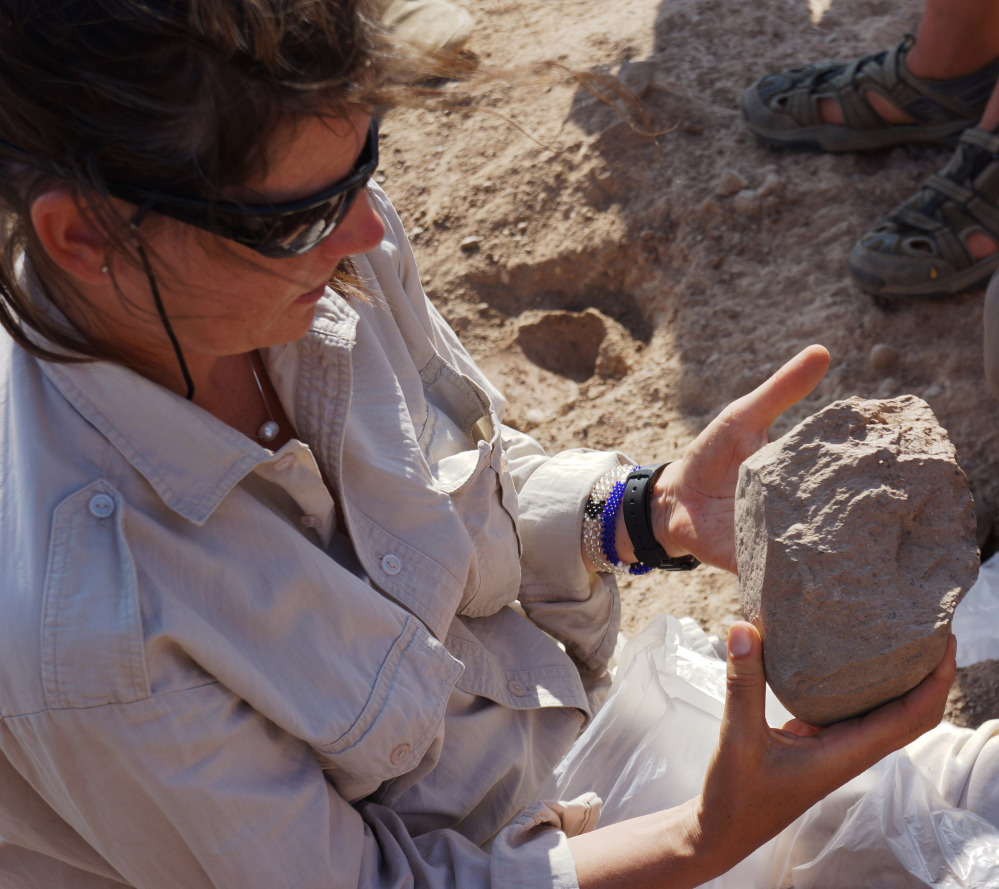NEW YORK — By taking a wrong turn in a dry riverbed in Kenya, scientists discovered a trove of stone tools far older than any ever found before. Nobody knows who made them – or why.
At 3.3 million years old, they push back the record of stone tools by about 700,000 years. More significantly, they are half-a-million years older than any known trace of our own branch of the evolutionary tree.
Scientists have long thought that sharp-edged stone tools were made only by members of our branch, whose members are designated “Homo,” like our own species, Homo sapiens. That idea has been questioned, and the new finding is a big boost to the argument that tool-making may have begun with smaller-brained forerunners instead.
The discovery was reported by Sonia Harmand and Jason Lewis of Stony Brook University in New York and co-authors in a paper released Wednesday by the journal Nature. The find drew rave reviews from experts unconnected to the work.
“It really absolutely moves the beginnings of human technology back into a much more distant past, and a much different kind of ancestor than we’ve been thinking of,” said anthropology professor Alison Brooks of George Washington University, who has examined some of the tools.
The authors have “opened a new window onto the human past, illuminating the work of the first tool-makers and raising as many questions as they have answered,” said Eric Delson of Lehman College in New York.
And Frank Brown of the University of Utah, an expert in determining the age of fossils who has known about the discovery for a couple years and visited the site, said he is “still kind of staggered by it.”
The Nature paper describes 149 stones and stone flakes found west of Lake Turkana in a remote area of northern Kenya. Most objects are “cores,” which are stones that have been struck to break off sharp-edged flakes. Other stones appear to have been used as hammers or anvils.
Africa is where our own species first appeared, and it has long been a hotbed for finding fossils of our forerunners. The Kenyan site was discovered one day in July 2011, when Harmand, Lewis and a crew set out to survey one area and by accident ended up in another one. There were gullies and hillsides that seemed promising, so they looked around, Lewis recalled in a telephone interview.
Just before tea time, a team member spotted a stone tool on the ground. More quickly appeared.
Experts said they were stumped about the purpose of the Kenyan tools.
Rick Potts, who directs the Smithsonian’s human origins program, said,
“The significance of the find is, ‘Hey, folks we better start looking before 2.6 million years ago,’ ” he said.
Send questions/comments to the editors.



Success. Please wait for the page to reload. If the page does not reload within 5 seconds, please refresh the page.
Enter your email and password to access comments.
Hi, to comment on stories you must . This profile is in addition to your subscription and website login.
Already have a commenting profile? .
Invalid username/password.
Please check your email to confirm and complete your registration.
Only subscribers are eligible to post comments. Please subscribe or login first for digital access. Here’s why.
Use the form below to reset your password. When you've submitted your account email, we will send an email with a reset code.